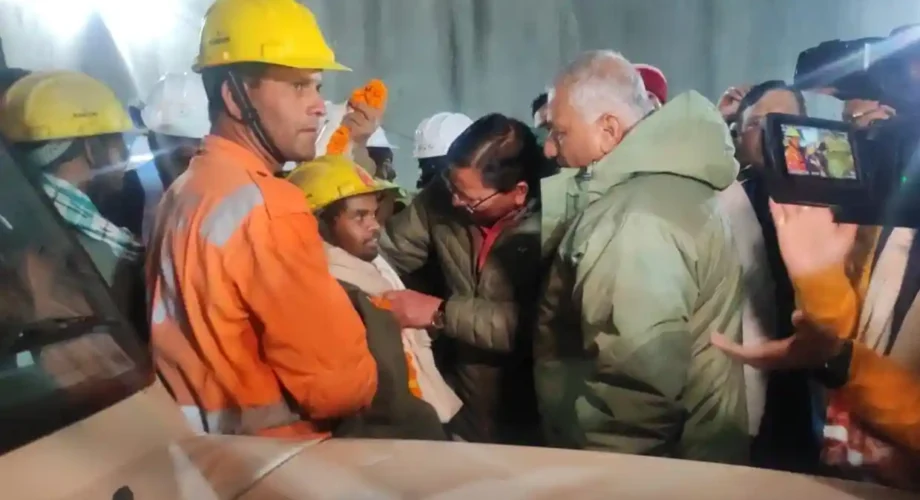
One of the trapped workers is checked out after being rescued from the tunnel.
All 41 Indian labourers have been rescued after a gruelling 17 days trapped in a collapsed tunnel in the Himalayan mountains.
The workers began to be pulled out through an escape pipe on Tuesday night after the last few metres of rubble were drilled by hand. The dramatic scenes of the first men emerging on stretchers from the entrance of the Silkyara-Barkot tunnel came after over 400 hours, during which the rescue operation hit multiple obstacles, delays and false promises of imminent rescue.
The first man was brought out at around 8pm on Tuesday. Ambulances and helicopters were on standby at the tunnel entrance to take the men to a hospital nearby. A freshly cooked meal of aloo gobhi, roti, dal and rice awaited the men outside the tunnel.
The labourers became trapped after a suspected landslide in the early hours of 12 November caused part of the tunnel roof to collapse and become blocked by more than 60 metres of dense concrete rubble, rock and twisted metal.
A major rescue operation swung into action, as a series of increasingly bigger drills were flown to the scene in the state of Uttarakhand to try to penetrate the blockage. The number of rescue workers swelled to more than 200 and the army and the air force were drafted in alongside the national disaster management team and foreign experts. The prime minister, Narendra Modi, was briefed daily about the progress.
The labourers had been given oxygen, food, water and medicines through a small water pipe, and constant contact was maintained with them over the 17 days. A dozen doctors and psychiatrists were brought to the site to monitor their health. According to the authorities the men had remained in good spirits and had even done yoga and played cricket to keep themselves entertained.
By late last week, a large mechanical drill managed to get through almost 50 metres of rubble, prompting authorities to proclaim a rescue would happen “within hours” and several politicians rushed to the scene. But with around 12 metres left to go, the drill blade broke after getting entangled in metal and the machinery had to be pulled out.
Authorities said a new strategy would be implemented and on Sunday they began the high-risk process of drilling vertically down into the tunnel roof, despite warnings by geologists that this could cause more of the roof to cave in.
To replace the broken drill, a team of six experts in “rat hole” mining were flown in to attempt to manually remove the remaining blockage from the entrance. Rat hole mining – a primitive method of extracting coal through very small tunnels – is outlawed in India as several people have died while doing it, but the practice remains common in some states.
By Tuesday evening, human labour triumphed over machinery as the specialists managed to manually drill through the final 12 metres of rubble to reach the men. An “escape passage” pipe was inserted, enabling the rescuers – carrying wheeled stretchers and oxygen cylinders – to enter and finally reach those inside.
Some rescue workers in hard hats made victory signs and posed for pictures. Relatives of the trapped men, who have been camping near the site, gathered outside the tunnel with luggage, ready to accompany the men to hospital.
“As he comes out, my heart will revive again,” the father of a trapped worker, Manjeet Chaudhary, said.
The tunnel is part of the $1.5bn (£1.2bn) Char Dham highway, one of Modi’s most ambitious projects, aimed at connecting four Hindu pilgrimage sites through a 550-mile network of roads. The project has faced criticism from environmental experts, who have alleged it is will lead to subsidence and disturbance of the fragile Himalayan region, which is already prone to landslides and earthquakes
According to a panel of experts investigating the disaster, the Silkyara-Barkot tunnel did not have an emergency exit and was built through a geological fault. The national highways authority of India has been instructed to audit 29 other tunnels being built across the country.